Located 130km from Ahmedabad, the largest city in the Indian state of Gujarat by population, Patan is famous for its age-old weaving traditions. The jewel-toned Patola was once the preserve of royalty and nobility – a sacred heirloom credited with healing and protective powers. Its mystique was such that it even fuelled conflict between kings.
Legend tells of 12th century ruler King Kumarpal of Patan, who draped himself in a fresh Patola each dawn before his temple visit. One morning, his priest whispered that the imported fabrics from Jalna were impure – the king there had used them as bedspreads before selling them. Enraged, Kumarpal invaded Jalna and brought back some 700 weaving families.
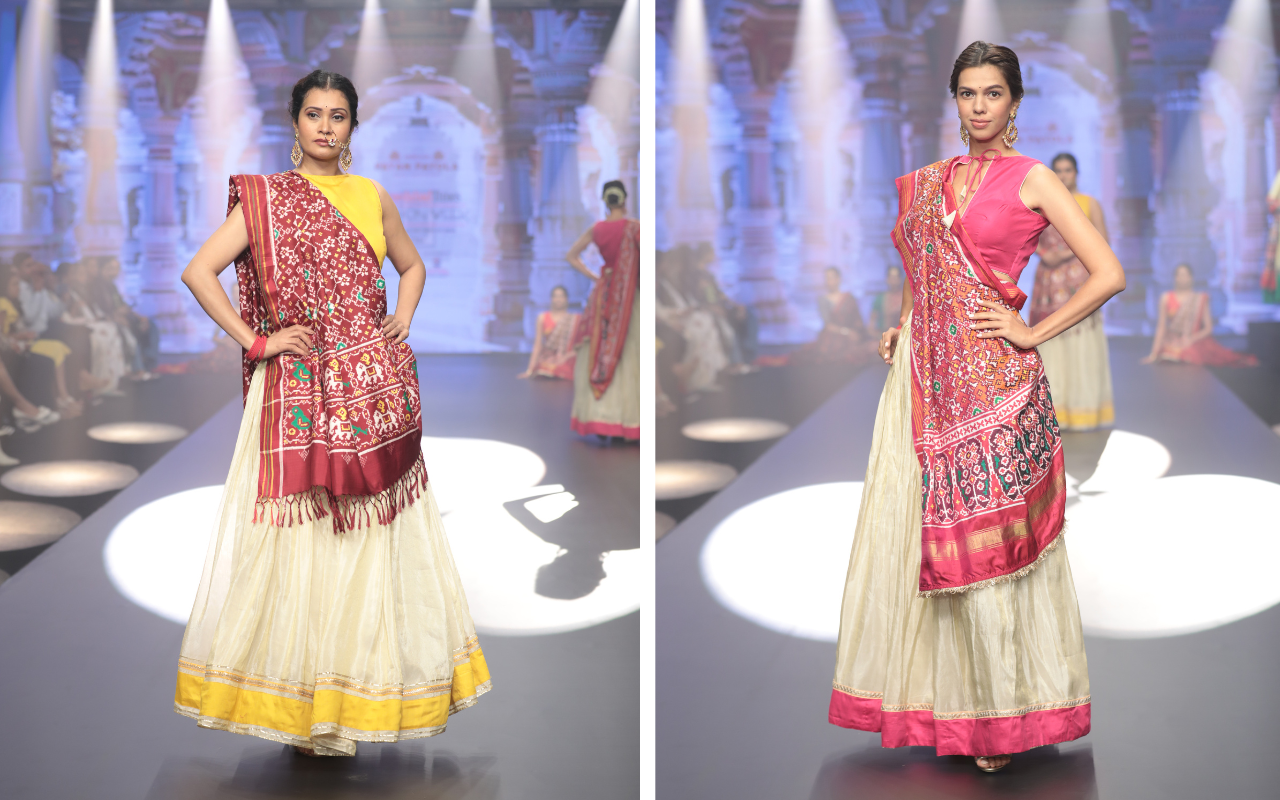
Beyond India, Patolas carried spiritual weight across Southeast Asia. In Thailand, Malaysia and Indonesia, they were considered sacred power cloths believed to protect wearers in battle. Dr Preeti Mehta, a textile collector who has helped revive interest in Patolas through exhibitions, notes that in Bali, they were draped on temple walls and used as burial shrouds. “In Indonesia, long ceremonial Patolas featuring a horizontal design of four huge elephants were revered as heirlooms and believed to have magical properties,” she says.

Today, only three Salvi families in Patan continue this thousand-year-old art – heirs to what locals call the queen of weaves. The Patola’s sanctity endures and it now carries a Geographical Indication (GI) tag protecting its legacy.
An art form of mathematical precision
The Patola’s power lies as much in its spiritual resonance as in its technical mastery. Each sari is a feat of geometry and patience. Both warp and weft threads are resist-dyed in intricate alignment – a double-ikat method requiring mathematical precision to ensure that patterns and colours mirror perfectly on both sides. This complexity sets it apart from single ikat, where only one set of threads is dyed.
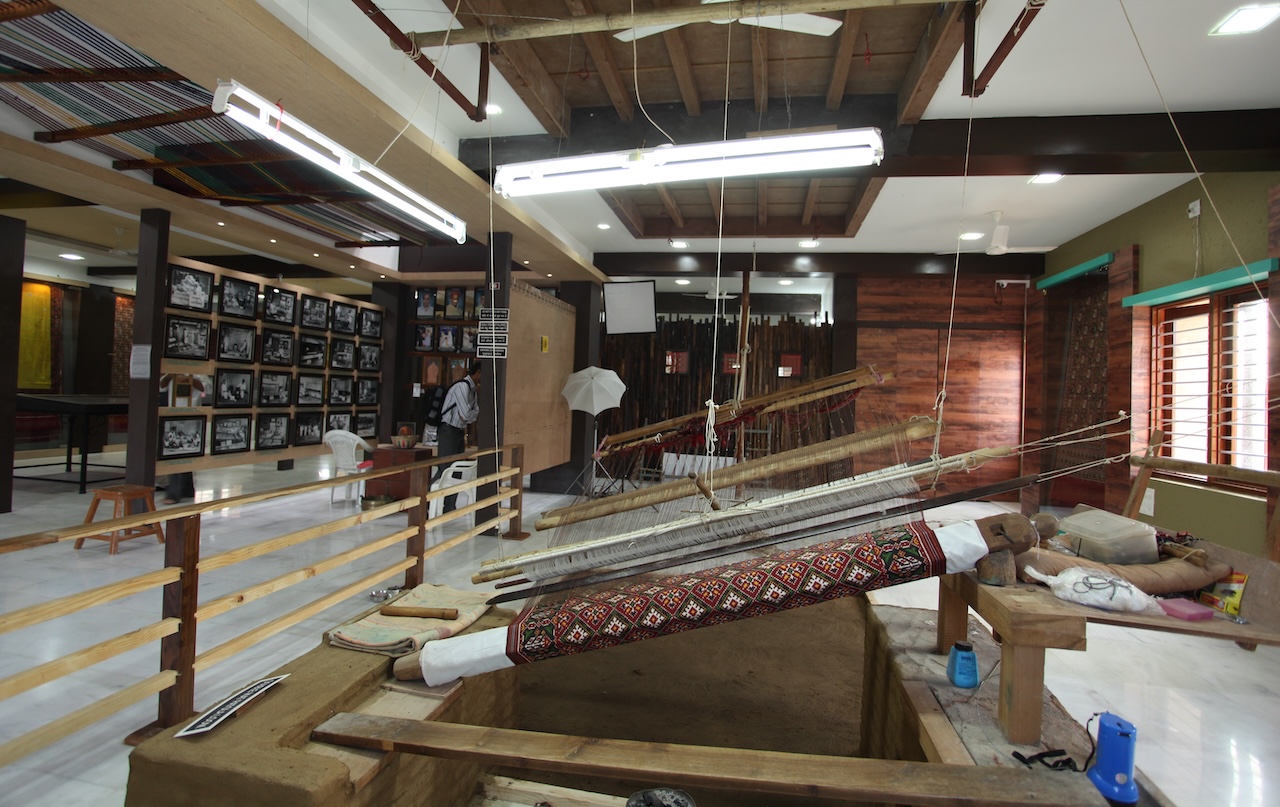
“We call it a sacred weave because even one misplaced knot means starting over,” explains Viral Salvi of Patolawala Weavers, which trains young artisans in techniques once guarded within families.
Inside his workshop, spindles, tubs of natural dye and reams of silk glint in jewel tones – filling the space with a palpable sense of lineage. Young apprentices tend to dyed threads while a master weaver silently works the loom.
“Around 25 painstaking steps go into one sari,” adds Kanubhai Salvi, another award-winning artisan with workshops in Patan and Vadodara for the brand Heritage Patan Patola. “We use dyes made from marigold flowers, pomegranate skin and turmeric – colours that never fade.”
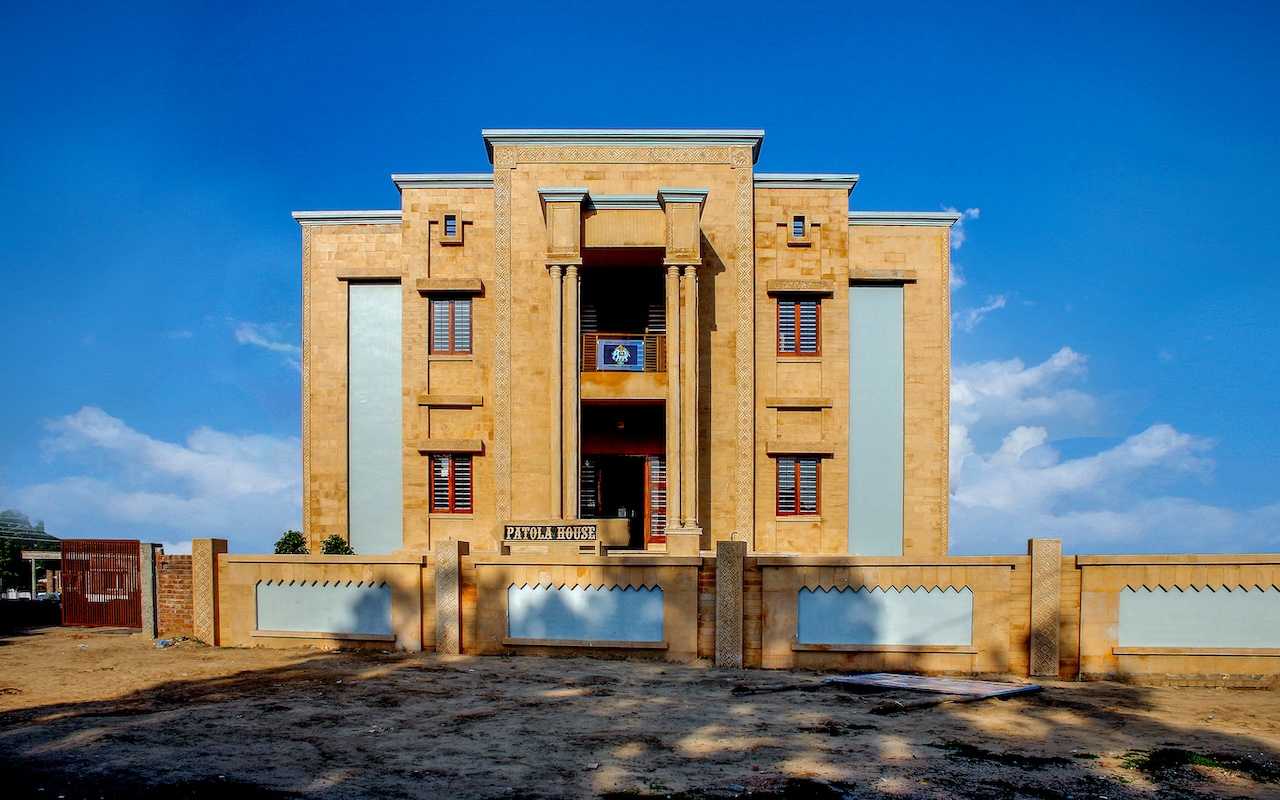
At the museum of the Patan Patola Heritage brand, architect-turned-weaver Rahul Salvi curates both antique and contemporary examples – documenting the Salvi family’s centuries-old process. “Our goal is not just to weave but to preserve the knowledge system behind it,” he says.
Coveted by the contemporary elite
A genuine Patan Patola commands between 150,000 and 600,000 Indian rupees (S$2,180–S$8,750), depending on the intricacy of the design. Four weavers may labour for six months or more on a single sari. In contrast, mass-produced digital prints fetch a fraction of the price but lack what one textile historian calls “the weave’s mystical energy”.
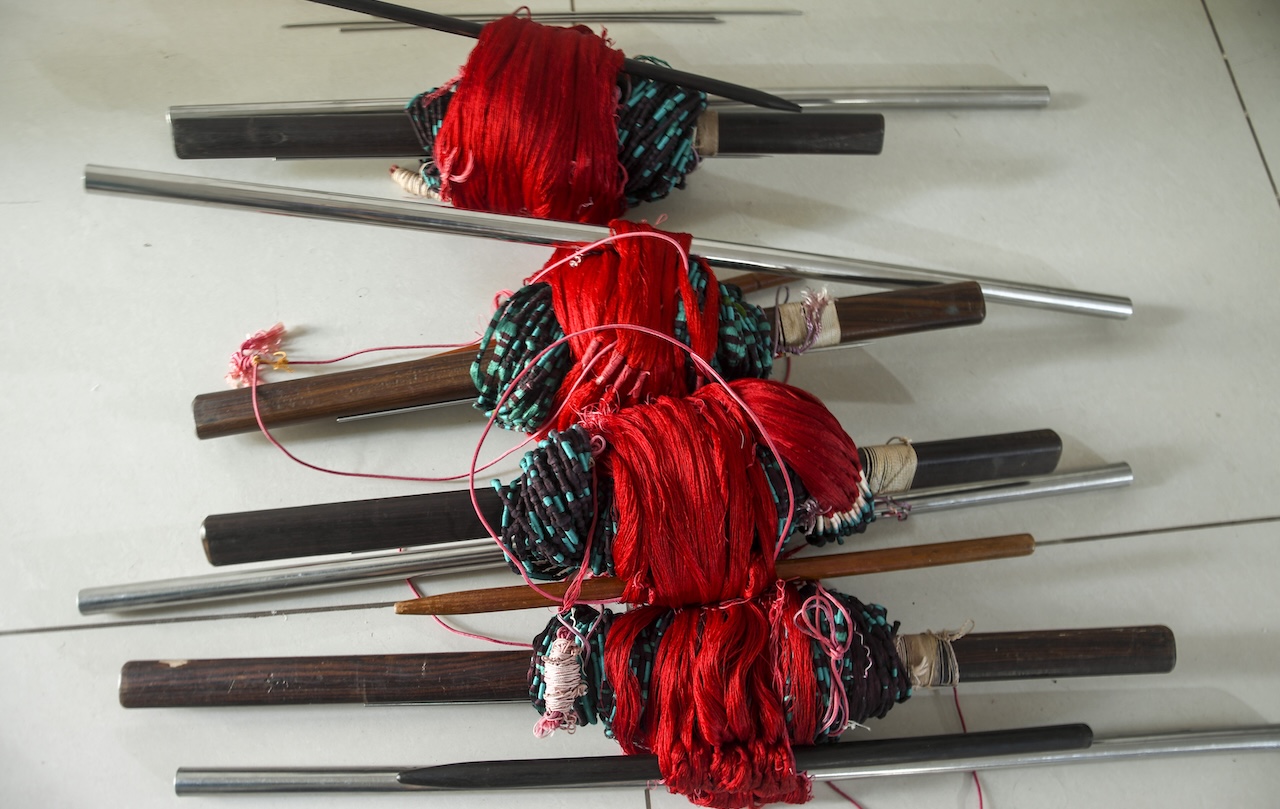
“The act of weaving is almost meditative,” writes Jasleen Dhamija in Sacred Textiles of India. “In the folds of the Patola lie a people’s history, rites of passage and collective memory.”
Its patterns – geometric, floral and sometimes figurative – have changed little over the centuries. Yet India’s top designers, including Sabyasachi Mukherjee and Gaurang Shah, are reinterpreting the weave for modern wardrobes, while designer Deepika Govind praises its fluidity: “It has a gliding, liquid quality when draped.”
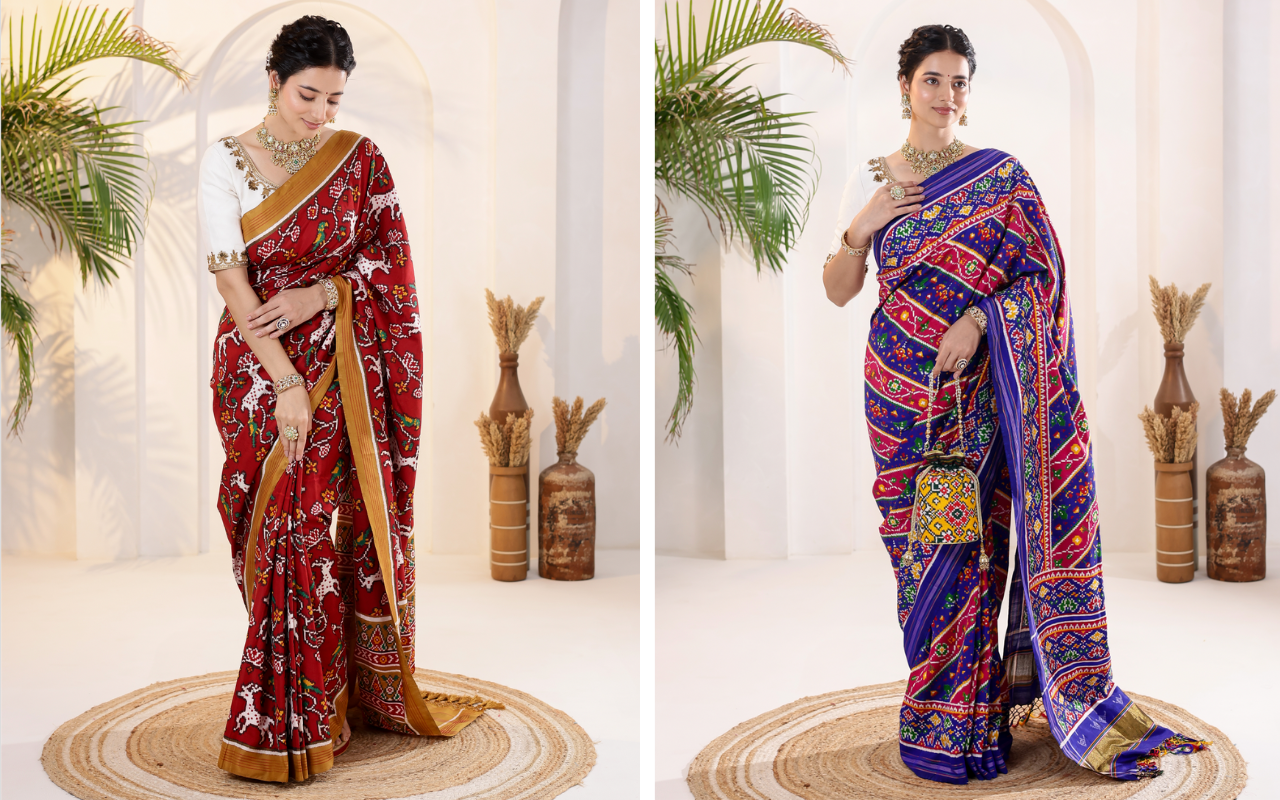
Today, Patolas grace red carpets and couture runways. Nita Ambani is said to own several, while her husband Mukesh Ambani and Prime Minister Narendra Modi favour Patola pocket squares – a modern nod to an ancient tradition.
Back in Ahmedabad, at Diwan’s Bungalow, a 150-year-old heritage property which houses carved woodwork and embroidered textiles, echoes of Patola linger. The property’s vintage fabrics aren’t mere décor but reminders of continuity – threads that connect artistry, memory and place. Running your hands across the silken weaves of Patan, you can sense more than craftsmanship. You can sense a lineage – a heartbeat pulsing through warp and weft, carrying the soul of Gujarat into the present.
For more information on Singapore Airlines’ flights to Ahmedabad, visit singaporeair.com.


